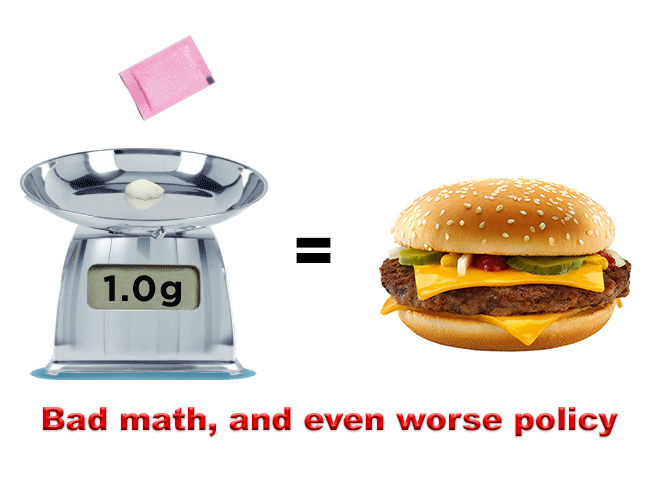We post news and comment on federal criminal justice issues, focused primarily on trial and post-conviction matters, legislative initiatives, and sentencing issues.

THE GOOD, THE BAD, AND THE WEIRD
 In the only good news to come from Washington so far this sleepy July, Senate Democrats have introduced a bill to decriminalize marijuana at the federal level this week, although the legislation faces long odds in the evenly divided chamber.
In the only good news to come from Washington so far this sleepy July, Senate Democrats have introduced a bill to decriminalize marijuana at the federal level this week, although the legislation faces long odds in the evenly divided chamber.
Majority Leader Charles Schumer (D-NY) worked with Sen Cory Booker (D-NJ) and Ron Wyden (D-OR) on the measure. The senators circulated a draft of the bill last year and made tweaks after feedback from Senate committees.
The Cannabis Administration and Opportunity Act (S.4591) would remove marijuana from the list of drugs covered by the Controlled Substances Act. States, however, can still maintain and create prohibitions on producing and distributing marijuana.
 The CAOA is the Senate’s answer to the MORE Act (H.R. 3617), passed in the House last spring on a 220-204 vote. Like the MORE Act, the CAOA will require all federal non-violent marijuana-related convictions and arrests be expunged within a year. Some lawmakers on both sides of the aisle have criticized Schumer for trying to push through a broad cannabis reform bill at the expense of a marijuana banking bill that has greater bipartisan support.
The CAOA is the Senate’s answer to the MORE Act (H.R. 3617), passed in the House last spring on a 220-204 vote. Like the MORE Act, the CAOA will require all federal non-violent marijuana-related convictions and arrests be expunged within a year. Some lawmakers on both sides of the aisle have criticized Schumer for trying to push through a broad cannabis reform bill at the expense of a marijuana banking bill that has greater bipartisan support.
The bad is that the EQUAL Act (S.79), which passed the House (361-66) last September, remains stalled in the Senate. The Act, which would equalize sentences for crack and powder cocaine (and offer retroactivity to anyone serving a crack offense now) has well over 60 votes in the Senate. The Senate Majority Leader – the guy who schedules votes on bills – is a cosponsor. So what’s the holdup?
In a long article on a crack cocaine defendant who finally got compassionate release, the Mississippi Free Press last week reported, “FAMM President Ring told the Mississippi Free Press more about what he sees as the senators’ political calculations. ‘The problem is that lawmakers are scared that if this bill comes up, Republicans will be allowed to offer amendments to it because that’s usually how the process works,’ he said.
Ring said that votes on amendments unrelated to the bill can be “weaponized by political opponents… As a result, the political calculation has been made to shelve the bill in the Senate.”
 In addition, Dream Corps JUSTICE Policy Director Kandia Milton, in June 23, 2022, letter, indicated that the group is concerned about a competing Senate bill sponsored by Sen Charles Grassley (R-IA) — the SMART Cocaine Sentencing Act, S.4116 – that “maintains a disparity between these two forms of the same drug (2.5-1), lower the mandatory minimum threshold to 400 grams from 500 grams and, worst of all, mandates that the U.S. Attorney must approve all petitions for retroactivity.” Milton wrote. “Our sense of urgency is driven by the reality that if we do not pass [EQUAL] by the August recess, we won’t get another clean shot until after the midterm elections, an unpredictable two-month window at the end of the year,” he added. “We are very close to eliminating the disparity between crack cocaine and powder cocaine, and we recognize there is more work to be done.”
In addition, Dream Corps JUSTICE Policy Director Kandia Milton, in June 23, 2022, letter, indicated that the group is concerned about a competing Senate bill sponsored by Sen Charles Grassley (R-IA) — the SMART Cocaine Sentencing Act, S.4116 – that “maintains a disparity between these two forms of the same drug (2.5-1), lower the mandatory minimum threshold to 400 grams from 500 grams and, worst of all, mandates that the U.S. Attorney must approve all petitions for retroactivity.” Milton wrote. “Our sense of urgency is driven by the reality that if we do not pass [EQUAL] by the August recess, we won’t get another clean shot until after the midterm elections, an unpredictable two-month window at the end of the year,” he added. “We are very close to eliminating the disparity between crack cocaine and powder cocaine, and we recognize there is more work to be done.”
The weird: Two weeks ago, the Senate Judiciary Committee whiffed for a second time on approving the nomination of the seven candidates for the Sentencing Commission. At the beginning of last Thursday’s work session, Durbin said, “We have decided on a bipartisan basis to hold over for a second time the Sentencing Commission nominees while members are in… we’re going to try to find a path for all seven nominees to move together, which I think would be a positive thing and maybe even historic around here.”
The terse statement suggested some substantial pushback on one or more nominations. Laura Mate, who signed a 2014 letter to Congress supporting more reasonable mandatory minimums for sex offenders, and former federal judge John Gleeson, whose criticism of the Guidelines while on the bench was legendary, were both pilloried by several Republicans during their June nomination hearing.
Nevertheless, last week the Committee finally got the job done. It advanced the slate of seven nominees to the floor of the full Senate for its approval, bringing the Commission one step closer to being able to amend the Sentencing Guidelines.
 The USSC has been unable to implement the First Step Act or, for that matter, do anything else after losing its quorum just as the bill was enacted in December 2018.
The USSC has been unable to implement the First Step Act or, for that matter, do anything else after losing its quorum just as the bill was enacted in December 2018.
The Senate Judiciary Committee voted to send to the full Senate four Democrat and three Republican candidates nominated by President Joe Biden to revitalize the Commission.
Committee chairman Durbin told the Committee that while he had reservations about some nominees, it was important to move them forward as a group to “enable the commission to get back to doing its work.” He said, “[T]he Sentencing Commission has not had a quorum for three years. With no quorum, the Commission—created in 1984 and tasked by Congress to promote transparency and consistency in sentencing—has been unable to update the sentencing guidelines to provide guidance to judges. Today, we make an important step to rectify the situation… [and] enable the Commission to get back to its work.”
Cannabis Administration and Opportunity Act (S.4591)
Seeking Alpha, Senate Democrats-backed marijuana legalization bill coming next week (July 14, 2022)
Bloomberg, Pot Gets Senate’s Attention in Long-Shot Decriminalization Bill (July 14, 2022)
Politico, Schumer’s legal weed bill is finally here (July 21, 2022)
KYFR, North Dakota lawmakers, advocates push for equal sentencing in federal cocaine and crack crimes (July 12, 2022)
Senate Judiciary Hearing (July 14, 2022)
Mississippi Free Press, ‘Model Inmate’: Father Finally Has Crack Sentence Reduced as U.S. Senate Shelves Reform Bill (July 22, 2022)
Independentcloud.com, Cannabis Bill Senate: US Democrats Demand Senate Pass Its Own Marijuana Banking Bill (July 21, 2022)
Reuters, US Senate committee advances nominees to restock sentencing panel (July 21, 2022)
Sen Richard Durbin, Judiciary Committee Advances Ten Nominees, Including Two Judicial Nominees, Seven Sentencing Commission Nominees, And An Assistant Attorney General (July 21, 2022)
– Thomas L. Root






























